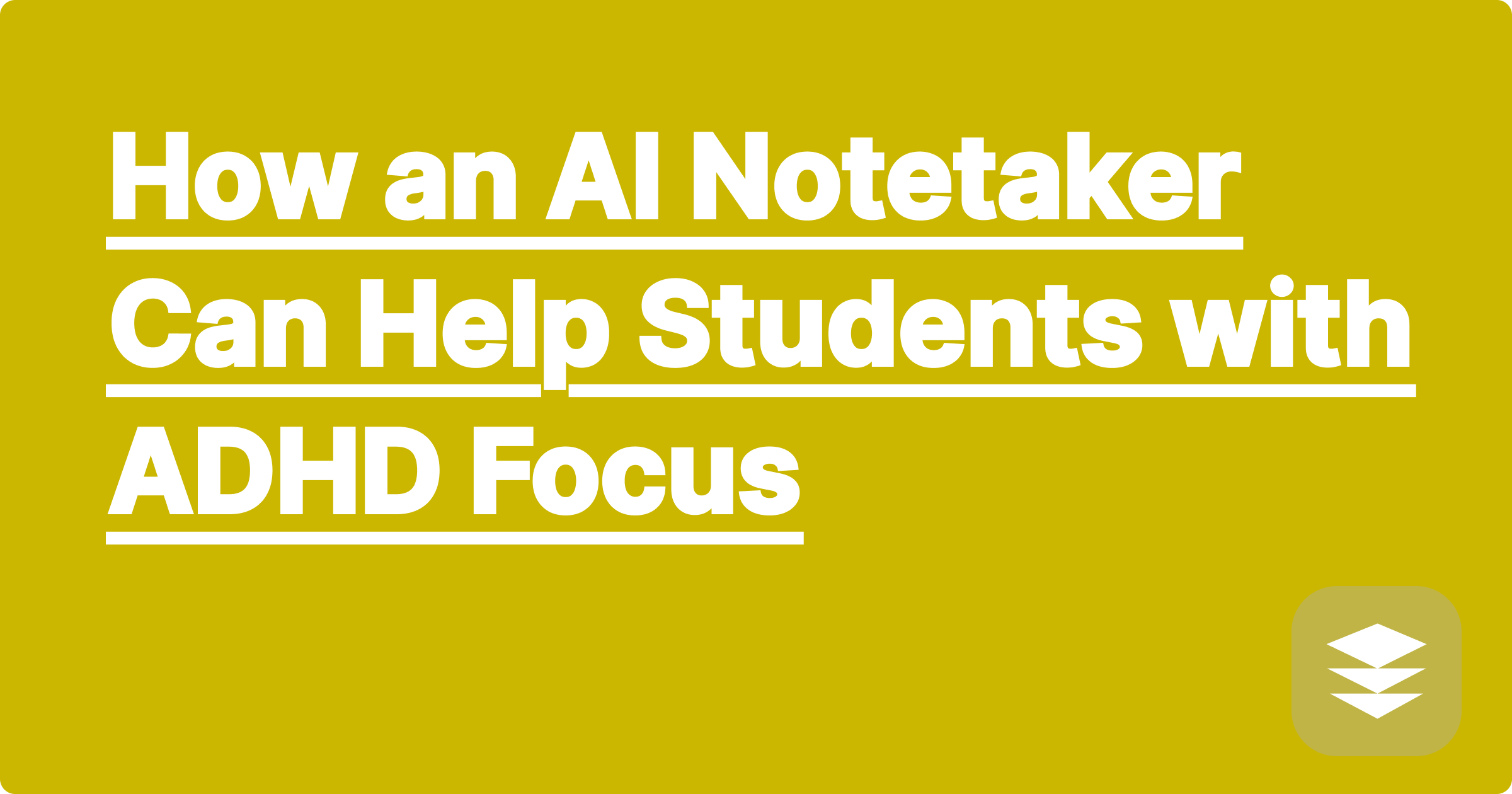
For a student with ADHD, a typical university lecture can feel like an impossible task. The expectation is to sit still for an hour, listen to a single stream of information, and simultaneously perform the complex executive function task of taking organized notes. This is a nightmare scenario for a brain wired for novelty and prone to distraction. Your attention drifts, you miss key points while trying to write, and you leave the class with a page of disconnected doodles and a feeling of frustration. This is where modern assistive technology for adhd students can be a complete game-changer.
The core challenges for an ADHD brain in a lecture setting are:
An AI note taker like GPAI Notetaker (part of the GPAI Cheatsheet suite) is one of the most powerful adhd study tools because it allows you to radically change your approach to lectures. The new strategy is simple but transformative: separate the act of capturing from the act of learning.
The Workflow:
[Image: A split-screen graphic. On the left, a student in a lecture hall looking relaxed and engaged, with just a phone recording the audio. On the right, the GPAI Cheatsheet interface on a laptop, showing a perfectly organized, summarized version of that lecture. Alt-text: A visual showing how an AI notetaker acts as an assistive technology for ADHD students, improving focus.]
This AI-assisted workflow helps combat boredom by turning a passive listening session into an active, two-part process. In class, you "hunt" for interesting ideas. After class, you "play" with the AI-generated notes—turning them into flashcards, creating mind maps, or asking the GPAI Solver follow-up questions. This makes the entire learning process more interactive and engaging.
This system gives you back a sense of control. You no longer have to fear that a momentary loss of focus will cause you to miss a critical piece of information. You can trust that the "capture" part is handled perfectly, allowing you to relax and engage with the lecture in a way that works best for your brain. The final, organized cheatsheet becomes a reliable resource for exam prep.
A: It's always best practice to ask your professor for permission to record their lecture for your own personal study use. Many universities have official accommodation policies for students with documented disabilities like ADHD, which often include the right to record lectures.
A: The AI notes are a starting point. The beauty is that they are digital and flexible. You can immediately use them for more active study methods. Prompt the AI: "Turn these notes into a 10-question quiz" or "Create a mind map of the main concepts." This turns a passive document into an interactive tool.
Your brain isn't broken; it's just different. The key to academic success is not to force your brain to work like everyone else's, but to find the tools and strategies that align with its unique strengths. An AI notetaker is a powerful piece of assistive technology that can help you manage focus, reduce anxiety, and unlock your full academic potential.
[Discover a more focused way to learn. See how the GPAI Notetaker can help. Sign up for 100 free credits.]
How to Finally Organize Your Chaotic Google Drive / Dropbox with AI
The Sunk Cost Fallacy of Your Old Study Habits: Why It's Time to Switch to AI
How an AI Notetaker Can Help Students with ADHD Focus
The 'Weekend Warrior' Study Plan: How to Master a Week's Content in 5 Hours
Could you explain that with a sports analogy?': Asking AI for Personalized Metaphors
The Quantified Student: Using AI to Track Your Study Metrics and Find Your Peak Time
How to Reverse-Engineer an 'A+' Paper with an AI Assistant
The 'Empty Your Brain' Technique: Using an AI Notetaker Before Bed for Better Sleep
Using AI to Create 'Ancestor' Cheatsheets: Linking Current Topics to Prerequisites
What's Next for GPAI? A Sneak Peek into Our Vision for the Future of Learning